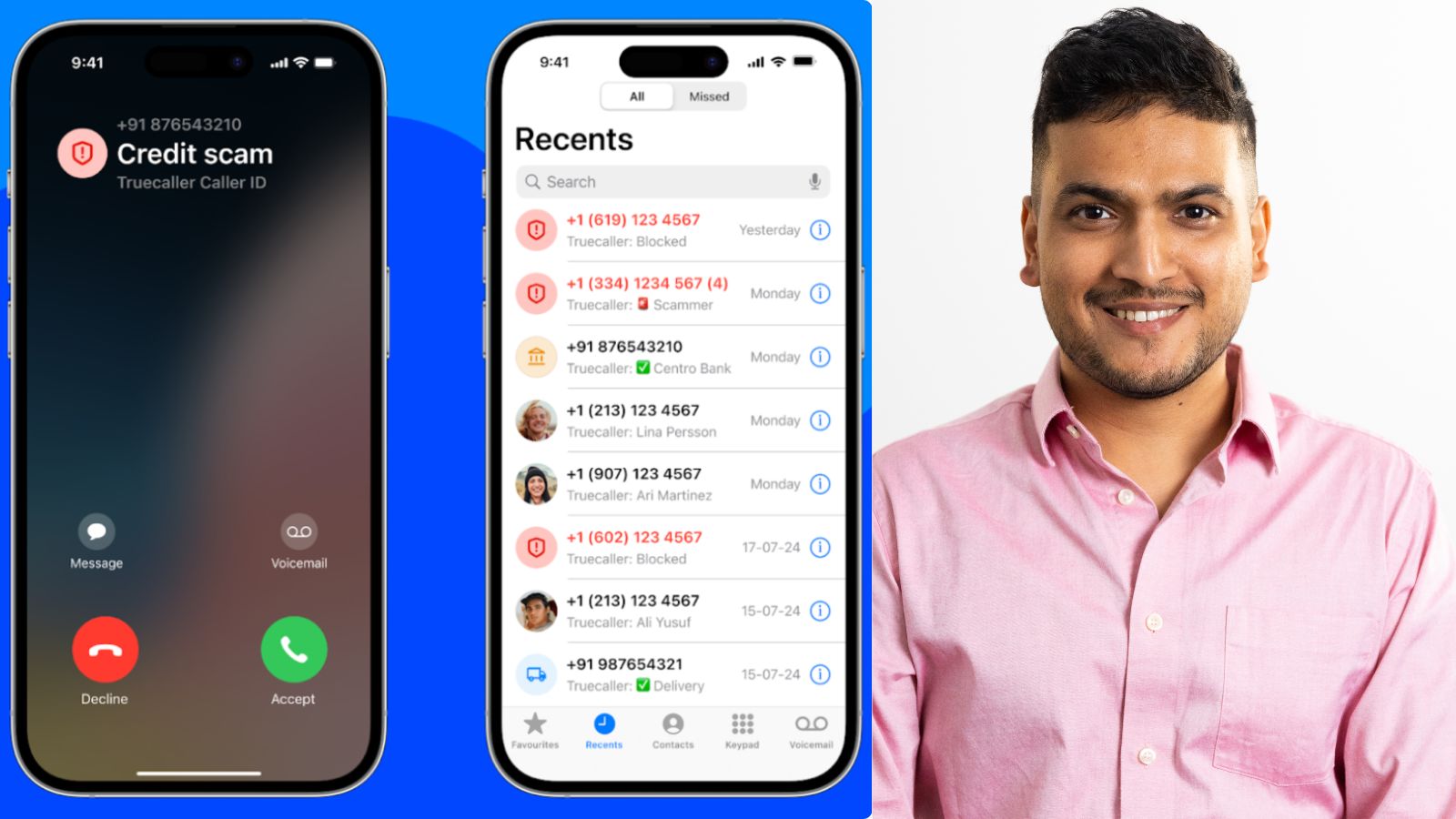“What users love about their iPhones is the peculiar user experience—and the new Caller ID is as native as your regular phone calls,” said Nakul Kabra, product director-iOS at Truecaller. Apple recently introduced real-time caller ID and spam blocking capabilities with the iOS 18.2 update, allowing third party apps like Truecaller function more effectively on iPhones.
Indianexpress.com recently caught up with Kabra, where he shared his insights on Truecaller’s integration with Apple, its evolution, and what lies ahead. Talking about the association, Kabra revealed that like with all developers, there are different channels through which Truecaller engages with Apple.
“Apple has always prioritised user experience. Any feedback we had was heard and considered. We used channels like the Feedback Assistant—users can submit feedback there too—and we kept giving real-world examples of what kind of issues users face. Being in the caller ID space, we had domain context—what users want, what they expect, and how to deliver that in an iOS-native way,” he explained.
On the impact of iOS 18.2 in enhancing Truecaller’s abilities, Kabra said that the new framework called Live Caller ID Lookup allows third-party apps like Truecaller to do real-time call lookup. The executive revealed that once a user gives permission, the device pings Truecaller’s servers at the time of the call.
“When the phone starts ringing, it makes an encrypted query to our servers, gets an encrypted response, and decrypts it only on the device before showing the caller ID. This is a big shift from the offline approach. It preserves user privacy while providing a native iOS experience,” he said.
Approach to Caller ID
Kabra shared that Truecaller introduced this in iOS 18.2, as there were some under-the-hood improvements to the framework. The executive shared that this is the first version and that Truecaller expects more improvements in speed, stability, and performance in the future.
When asked about the key developments that made real-time Caller ID possible on iPhones, Kabra explained that the technology rests on three pillars – private information retrieval, privacy pass protocol, and private relay.
Story continues below this ad
Private information retrieval means using homomorphic encryption, as it allows lookups on a database without revealing what is being looked up. The Privacy Pass protocol ensures that users are legitimate without revealing their identities, while Private Relay is Apple’s infrastructure for sending encrypted requests to Truecaller servers.
The evolution of Truecaller
Talking about the inception of the company, Kabra said that Truecaller has been around since 2009, when it was introduced on all platforms, including iOS. “At the time, there was no native support for Caller ID on iOS. What we were doing was a workaround through which we were providing some sort of spam detection. Over the years, we continued to use different workarounds to provide the same value users expected from Truecaller. The expectation was simple: if I get a spam call, please let me know or block it for me,” Kabra shared.
The Truecaller executive said that Apple introduced a new framework called CallKit in 2016, with native support for Caller ID for the first time. “It evolved over the years, and we used it to provide Caller ID for most calls. This particular framework, called Call Directory, was based on offline technology, where you need to have predefined lists saved locally. It would check the local directory at the time of the call and show the caller ID,” he said.
Truecaller for Indian users
In the last few years, India has witnessed an exponential rise in spam and fraud calls. When asked about Truecaller’s benefits for Indian iPhone users, Kabra, while acknowledging that spam and fraud calls are getting worse, said that a lot of new spam comes from freshly bought SIMs or newly registered numbers.
Story continues below this ad
“In the older, offline version, we’d miss these calls. You’d search for a number post-call and realise it was flagged by others—but too late. The real-time system fetches live data. It helps us detect new spammers more effectively. Users report spam quickly, and our ML systems detect patterns early. Sometimes we flag a number as ‘likely spam’ before it’s confirmed. This proactive approach helps avoid harm from fraudulent calls,” he said.
Kabra said that with a vast user base in India, Truecaller’s real-time system can now look up the full database instantly, unlike the limitations posed by offline lists. Talking about India-specific features for iOS, Kabra said that the company was working on features such as displaying images in Caller ID for richer context, blocking an entire series of numbers, and enhancing SMS filtering, offering users greater control over message categorisation.
AI is being used increasingly for call security and spam reduction. When asked how Truecaller was integrating these on iPhones, Kabra revealed that the company has been using AI for spam detection and call screening.






